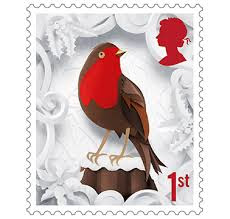A friend recently asked my local birding group about a small stripy bird he had photographed in Cyprus. It was identified as a Zitting Cisticola (Cisticola juncidis).
I agreed with the identification, but personally I think that Zitting Cisticola is a stupid name and I would always use its original English name of Fan-tailed Warbler. After all, this small brown bird looks like a warbler, sounds like a warbler and displays a beautifully fanned tail during its song-flight.
The ludicrous name Zitting Cisticola seems to have been contrived for two reasons: firstly because birds in the Cisticola genus are not now considered true warblers (whatever that means); and secondly, because taxonomy despots wanted to avoid the preposterous risk of confusion with a rare Central American bird that has also been given the name Fan-tailed Warbler.
But Zitting Cisticola is such a crass name. First, no one even knows what Cisticola actually means. The -cola element refers to an “inhabitant” (from the Latin verb colere, to inhabit) but the cist- bit could be derived either from Latin cista- (“of a woven basket”, perhaps referring to the fantail’s finely woven nest) or from Greek kistos (“a flowering shrub”). So the Cisticola is a bird that lives either in a fancy nest or in a pretty bush.
And “zitting”? You won’t find any dictionary that includes “zit” as a verb. Zit is a well-known noun meaning a pimple, a small red swollen spot, especially one on the face. So far as I know, the Fan-tailed Warbler is not prone to facial blemishes, so “zitting” presumably refers to the bird’s song, which sounds a bit like scissors rapidly snipping.
Since the Fan-tailed Warbler is by far the most abundant and widespread species within its genus, most of the other 50 or so Cisticola species did not even have English names until the taxonomy tsars came along. And if you agree that the adjective “zitting” is silly, you will be astounded by the even more idiotic English names that have been offloaded onto on some of the other Cisticola species. Let me present the following:
- Bubbling Cisticola (C bulliens)
- Chattering Cisticola (C anonymus)
- Chirping Cisticola (C pipiens)
- Churring Cisticola (C njombe)
- Croaking Cisticola (C natalensis)
- Piping Cisticola (C fulvicapilla)
- Rattling Cisticola (C chiniana)
- Siffling Cisticola (C brachypterus)
- Singing Cisticola (C cantans)
- Tink-tink Cisticola (C textrix)
- Tinkling Cisticola (C rufilatus)
- Trilling Cisticola (C woosnami)
- Wailing Cisticola (C lais)
- Whistling Cisticola (C lateralis)
- Winding Cisticola (C galactotes)
So if you agree that "zitting" is ridiculous, what do you think about "siffling", "tink-tink"and "tinkling"?
And some members of the genus that have managed to avoid stupid names derived from their calls or songs have instead been lumbered with equally wacky monickers such as the following:
- Carruthers's Cisticola (C carruthersi)
- Cloud-scraping Cisticola (C dambo)
- Foxy Cisticola (C troglodytes)
- Lazy Cisticola (C aberrans)
- Rock-loving Cisticola (C emini)
- Stout Cisticola (C robustus)
- Tiny Cisticola (C nana)
- Wing-snapping Cisticola (C ayresii)
As mentioned above, another dubious reason for discarding the name Fan-tailed Warbler is that this name is also used for a rare American species. This upstart New world bird is a rare and shy forest-edge bird found along the Pacific slope in Mexico, Guatemala, El Salvador and Nicaragua. It was given its name comparatively recently, while the Old World Fan-tailed Warbler has been known for centuries as a common inhabitant of grassland habitats across southern Europe and the Middle East, throughout Africa and southern Asia and even right down to northern Australia. Indeed, the Old World bird is so widespread that it outnumbers all the other 50 Cisticola species put together.
Since our Old World bird clearly had first dibs on the name Fan-tailed Warbler, it should have been up to the Americans to find a new name for their own bird — even if they simply called it an American Fan-tailed Warbler. After all, they already accept the names American Wigeon, American Coot, American Woodcock, American Oystercatcher, American Avocet, American Golden Plover, American Kestrel, American Bittern, American Crow, American Dipper, American Robin, American Tree-creeper, American Goldfinch, American Tree Sparrow, American Redstart, etc.
Etc.
For my previous rants on this topic, see my blog posts at: http://mrandrewhaynes.blogspot.co.uk/2014/09/loony-bird-names_25.html and http://mrandrewhaynes.blogspot.co.uk/2013/02/renaming-bird-species.html




